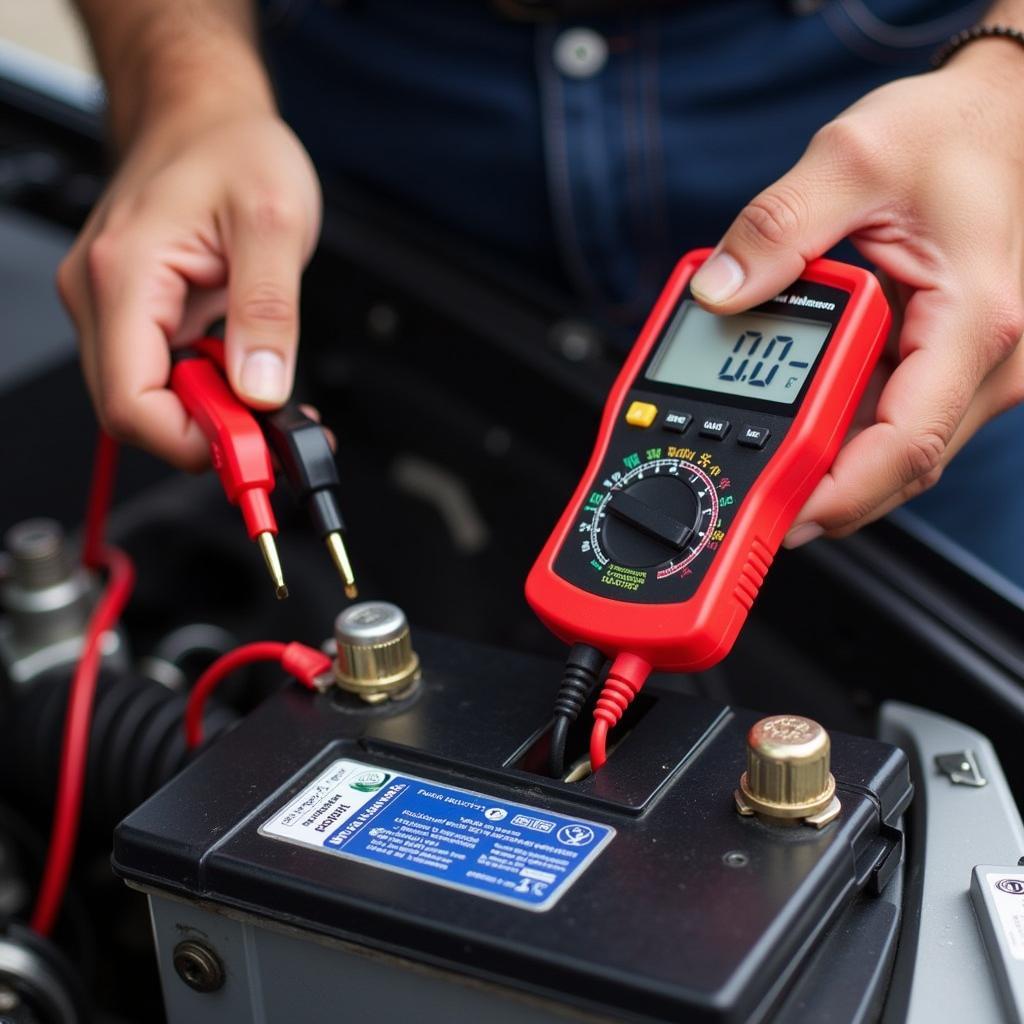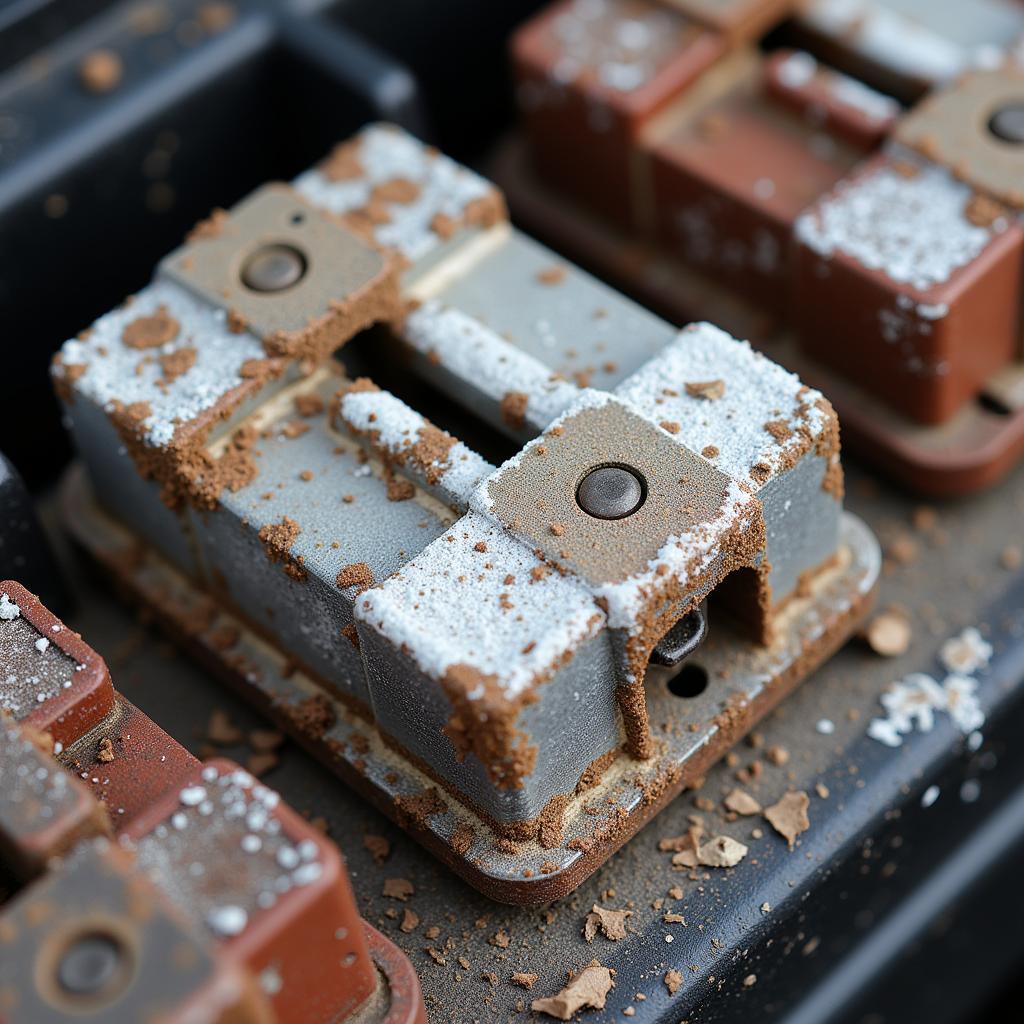Diagnosing a bad battery can be tricky, but with the right knowledge and tools, you can pinpoint the issue and get back on the road. This guide will provide you with a step-by-step approach to identify a failing car battery, from simple visual inspections to more advanced testing methods, empowering you to take control of your vehicle’s health.
As a specialist in automotive electrical engineering, focusing on remote diagnostic services, programming, and software installation to fix car problems, I’ve encountered numerous battery-related issues. Knowing how to diagnose a failing battery is essential for any car owner. It can save you time, money, and the frustration of being stranded with a dead battery. After this guide, you should be able to diagnose your bad battery. Check out this resource on auto battery drain causes if you’re interested in learning more about why your battery might be failing. auto battery drain causes
Signs Your Car Battery is Failing
Several tell-tale signs can indicate a dying battery. These range from obvious symptoms like a car that won’t start to more subtle clues that might be easily overlooked.
- Slow Cranking: When you turn the key, the engine cranks slowly or struggles to turn over.
- Dim Headlights: Especially noticeable at idle, dim headlights can be a sign of a weakened battery.
- Clicking Sound When Starting: This clicking sound is the starter solenoid engaging but lacking the power from the battery to crank the engine.
- Electrical Malfunctions: Issues with power windows, radio, or interior lights can also point towards a battery problem.
- Check Engine Light: While not always directly related to the battery, a check engine light can sometimes indicate a charging system problem that impacts the battery’s health.
- Swollen Battery Case: A visibly swollen or bloated battery case is a sign of internal damage and requires immediate replacement.
- Old Age: Batteries typically have a lifespan of 3-5 years. If your battery is nearing or exceeding this age, it’s a good idea to have it tested.
How to Test Your Car Battery
Testing your car battery is crucial for accurate diagnosis. Here are a few methods:
- Visual Inspection: Check for any visible signs of damage, corrosion, or leakage. Clean any corrosion around the terminals using a wire brush and a baking soda/water solution.
- Voltmeter Test: A voltmeter measures the battery’s voltage. A fully charged battery should read around 12.6 volts. A reading below 12.4 volts indicates a low charge.
- Load Test: This test measures the battery’s ability to hold a charge under load. A load tester simulates the demands of starting the engine. A failing battery will not maintain voltage under load.
- Battery Tester: Dedicated battery testers combine voltmeter and load testing capabilities, providing a comprehensive assessment of battery health.
 Testing Car Battery with Voltmeter
Testing Car Battery with Voltmeter
Sometimes, a car not starting isn’t solely due to a bad battery. Many other components can cause similar symptoms. Learn more about other potential culprits in our guide on car not starting not battery. car not starting not battery
Why is Diagnosing a Bad Battery Important?
A failing battery can lead to various problems, from inconvenience to potential safety hazards. A dead battery can leave you stranded, and a faulty charging system can damage other electrical components. Regular battery testing and prompt replacement are crucial for maintaining your vehicle’s reliability and safety.
What Happens If You Don’t Replace a Bad Battery?
Ignoring a bad battery can lead to further complications, including damage to the alternator and starter. It can also lead to costly repairs and the inconvenience of being stranded.
 Corroded Car Battery Terminals
Corroded Car Battery Terminals
“Regular battery maintenance, including cleaning terminals and periodic testing, can significantly extend the life of your battery and prevent unexpected failures,” says John Smith, Senior Automotive Electrical Engineer at Acme Auto Electric.
Maintaining Your Car Battery
Proper maintenance can prolong the lifespan of your car battery. Keep the terminals clean, ensure the charging system is functioning correctly, and avoid leaving accessories on when the engine is off. If you suspect your battery is nearing the end of its life, have it tested and replaced if necessary.
“Don’t wait for your battery to completely fail before taking action. Proactive maintenance is key to avoiding frustrating breakdowns,” advises Sarah Jones, Lead Technician at Auto Solutions Inc.
If you are experiencing battery problems with a specific car model, you may find helpful resources online. For example, if you own a 2014 Buick LaCrosse, you could search for information related to 2014 Buick LaCrosse battery problems. 2014 buick lacrosse battery problems It’s also important to understand common problems associated with your type of battery, such as 12 volt battery problems. 12 volt battery problems Or perhaps you have a new car battery dies overnight, which requires specific troubleshooting. new car battery dies overnight
Conclusion
Diagnosing a bad battery involves observing symptoms, conducting tests, and understanding the importance of maintenance. By following the steps outlined in this guide, you can effectively diagnose a bad battery and take the necessary steps to ensure your vehicle’s reliability. Remember to prioritize regular maintenance and address any battery concerns promptly to avoid future problems.
